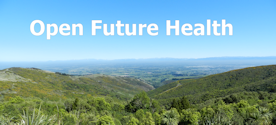Richard J Johnson
The text below was written in 2017, as a preface to a "Distinguished Lecture" for the Cooperative Institute for Research In Environmental Sciences at the University Of Colorado. It's a good introduction to the 3 videos below.

One of the key survival mechanisms animals use is to store fat and water during times of food and water shortage. While some animals will physically store food and water in food caches, others have learned how to store fat and glycogen, often with a reduction in energy metabolism and the development of insulin resistance (that maintains high glucose levels in the blood to provide fuel to the brain).
Work led by Dr Miguel Lanaspa and myself have identified a pathway in purine metabolism that appears to activate this energy conservation pathway. One of the key factors is uric acid, a purine breakdown product. In this regard, humans have higher serum uric acid than most mammals due to a mutation that occurred 15 million years ago in the mid Miocene.
The mid-Miocene was an interesting time in human evolution. In the early Miocene the first apes appeared in Africa, and they were mainly fruit eating and lived in the trees. During the early Miocene there was more or less an “Eden” for these apes, and multiple species developed over several million years. Around 18 million years ago, global cooling began, leading to the development of polar ice caps and a fall in sea levels, and a landbridge developed between Africa and Eurasia. During this time numerous species crossed into Eurasia, including ancestral apes.

Initially the apes could live in the same manner as in Africa, but as cooling continued there was a change in the forests in Europe with the development of savannas and seasonal changes in temperature, and fruit, which had been available year-round in Africa, was no longer available during the cooler months. There is evidence that there was progressive starvation with eventual extinction of the European apes by 8 million years ago.
However, work by Dr Peter Andrews at the Natural History Museum in London, as well as others, showed that by the fossil record, current great apes and humans are derived from the European and not African apes, implying that some must have migrated back to Africa prior to their extinction in Europe. Here we piece together a mutation in uric acid metabolism that we have proposed likely occurred in Europe as a survival advantage for apes living there, as the mutation could enhance the ability of the apes to store fat and survive during the period of progressive starvation.
This same mutation can be shown to markedly amplify the effect of fructose to increase fat stores. While this was a survival advantage for early apes, with the introduction of table sugar (fructose/glucose), the mutation markedly enhanced our ability to become fat, and can be shown to have a role in the current diabetes and obesity epidemic.
Dr Richard Johnson explains how fructose can be a food source or a metabolic poison. You may be familiar with  Dr Gary Fettke talking about the problems with fructose. That fructose and alcohol use the same metabolic pathway. Dr Johnson, has in inside knowledge about that, and why the level of uric acid in your blood might be a concern.
Dr Gary Fettke talking about the problems with fructose. That fructose and alcohol use the same metabolic pathway. Dr Johnson, has in inside knowledge about that, and why the level of uric acid in your blood might be a concern.
'Nature Wants Us To Be Fat - Part 1'
Prof. Richard Johnson (44 minutes)
Low Carb Down Under: May 1, 2022
Nature Wants Us To Be Fat - Part 2
Prof. Richard Johnson (43 minutes)
Low Carb Down Under: April 21, 2022
'Nature Wants Us To Be Fat - Part 3'
Prof. Richard Johnson (40 minutes)
Low Carb Down Under: May 1, 2022

 University of Colorado, Professor, Medicine-Renal Med Diseases/Hypertension
University of Colorado, Professor, Medicine-Renal Med Diseases/Hypertension